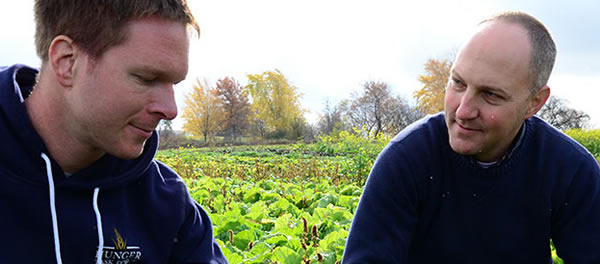Wisconsin has hundreds of diversified, fresh market vegetable operations, but there’s one on the outskirts of Franklin that’s in a class by itself.
Most of the state’s market farms are small. They grow produce on a few rural acres, rely heavily on family labor and sell at farmers markets or roadside stands. But “the Farm,” as it’s simply called, is different. It’s big—it grows 26 kinds of fruits and vegetables on about 150 acres—and anything but pastoral, being located on the grounds of the Milwaukee County House of Corrections. Hundreds of people, mostly volunteers, work the fields. And everything they harvest is given away.
The Farm is operated by the nonprofit Hunger Task Force (HTF) as a way to supply fresh produce to more than 80 food pantries and meal programs in the Milwaukee area. HTF leases the former prison farm from the county for a token fee, and with help from hundreds of community volunteers and several dozen workers employed through its job training program, provides hunger relief sites with 350,000 pounds of everything from apples to zucchini.
That’s impressive, especially considering that HTF embarked on the project some eight years ago with little expertise in horticulture. Farm manager Rich Richardson’s background is in information technology.
That’s where CALS comes in. For the past few years, CALS and UW-Extension specialists in horticulture, soils, agronomy, entomology, plant pathology and other disciplines have been providing hands-on, in-the-field advice on topics ranging from soil fertility and weed control to irrigation and orchard management. And CALS dairy science grad Jay Janowski BS ’07 is Richardson’s second in command.
The UW experts have been happy to help—the project not only serves a worthy cause, it also offers a unique set of challenges.
“This is very ambitious. It’s not a market garden, it’s a very large, diversified vegetable farm,” says CALS horticulture professor Jed Colquhoun. “It’s a tremendous task when you consider the number of crops and that most of them have to be hand-harvested.”
“They’re doing a great job,” agrees CALS soil scientist Matt Ruark. “Last year they were having issues with nutrient deficiency. We reviewed their fertilizer program and helped them make adjustments. Everything looked good this year. Now we’re working with them on trying some other management practices, such as cover cropping, to improve fertility.”
HTF executive director Sherrie Tussler says her organization is grateful for the help. “CALS has helped us overcome many of the challenges we’ve faced as new farmers,” she says. “The expertise CALS provided helped us grow 350,000 pounds of fresh Wisconsin produce this past season. Hungry people in Milwaukee were fed—and for this we are thankful to our friends at CALS.”
To learn more about the Farm’s impact on families in need, visit www.hungertaskforce.org/the-farm

